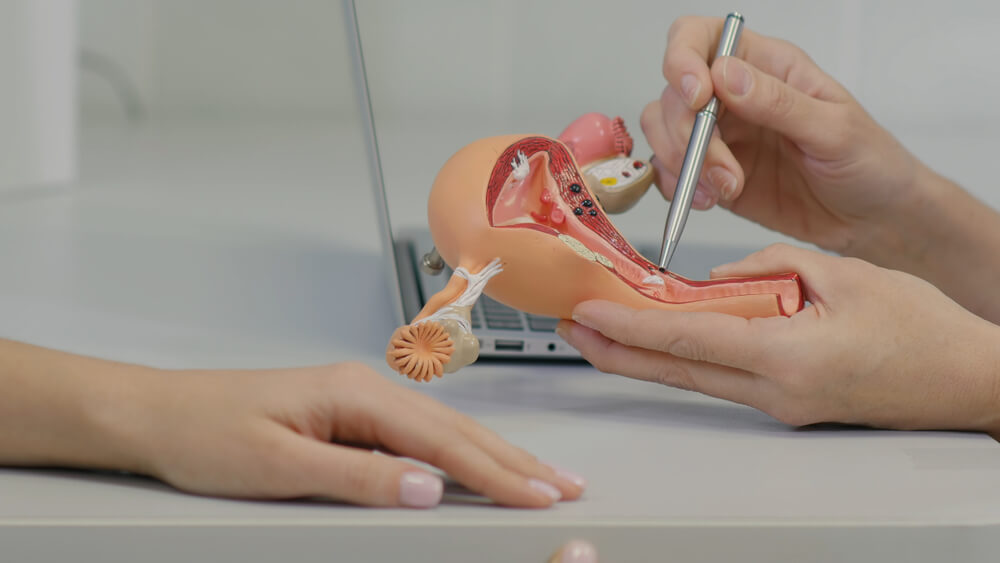If you suffer from pelvic pain, heavy periods due to fibroids, or are diagnosed with ovarian cancer, your doctor may recommend a full hysterectomy. The decision to undergo this medical procedure can be a bold one. Namely, although it can save lives, women after full hysterectomy cannot have children. Whether you or someone dear to you is considering full hysterectomy, we are here to provide you with facts and expert advice. In this article, you’ll find out the pros and cons of hysterectomy, what life after a hysterectomy looks like, and more.
Besides educating yourself, you will also look for a highly skilled and reliable professional for proper diagnosis and treatment. If you’re on the lookout, we always recommend surgical procedures in Palm Beach.
That being said, here are the facts about full hysterectomy you need to know. We also include three must-know things about full hysterectomy you probably didn’t know before reading this article.
Let’s begin.
What is a Full Hysterectomy?
A hysterectomy is a serious procedure where a patient’s uterus or womb is removed. There are different types of hysterectomy, and the type you may undergo will depend on the reason for the operation and how much of your uterus and the other reproductive system can remain intact. The four main hysterectomy types are:
- Total or full hysterectomy
- Total hysterectomy + bilateral salpingo-oophorectomy
- Subtotal or partial hysterectomy
- Radical hysterectomy
A woman’s cervix (or the uterus’s neck) and uterus are removed during full hysterectomy. This procedure is the most common and the most preferred one.
A partial hysterectomy is the least disruptive type, and it can be effective in uterine fibroid, cancer, and endometriosis treatment. However, it may not be the right choice for all women. Some patients may instead get a partial hysterectomy which involves the removal of the uterus’s main body, leaving the cervix intact.
Who May Need a Hysterectomy?

There are a few reasons why a woman may need to undergo a hysterectomy procedure. These are some of the most common ones:
- Prolapse of the womb
- Cancer of the cervix, ovaries, or the womb
- Heavy periods due to fibroids
- Pelvic pain due to endometriosis, fibroids, adenomyosis, or pelvic inflammatory disease
When it comes to heavy menstrual periods that disrupt everyday life, a woman may consider a partial hysterectomy. In certain cases, the removal of the womb is the only way of stopping abnormal menstrual bleeding. If the woman’s life is not in danger, the procedure is called an elective hysterectomy.
Cancer, including ovarian, cervical, cancer of the uterus, and fallopian tubes, may also need serious surgical intervention, and hysterectomy may be the only possible treatment. Sometimes, patients will not have options when it comes to full hysterectomy. In some cases, a hysterectomy is the only way to regain health. However, in other cases, we advise women to ask themselves a few questions before proceeding with the surgery:
- Do I have other treatment options?
- Do I want to have children in the future?
- Are these symptoms (such as menstruation) getting in the way of my everyday life?
- Am I mentally prepared for the chances of entering early menopause?
It’s true; a hysterectomy can save a person’s life. However, sometimes women don’t undergo this procedure because of life and death. Instead, they decide to have an elective hysterectomy. So, if you answered “yes” to the questions above, you may want to proceed with elective hysterectomy. However, make sure that you are 100% sure because the results are irreversible.
Pros and Cons of Hysterectomy
Everything in life has its drawbacks and benefits. Here are some of the positive sides of a hysterectomy:
- It can help with uterine fibroids
- It can be an effective cancer treatment
- It can eliminate or reduce endometriosis symptoms
- It may help with adenomyosis
- It can help treat pelvic inflammatory disease
- Can be a good solution for hyperplasia
- It can be a treatment option for general abnormal bleeding
Now, let’s see what the most common drawbacks of a hysterectomy include:
- A full hysterectomy may lead to premature menopause (that’s associated with health risks such as cardiovascular illness)
- Changes in the production of hormones can lead to chronic issues and the loss of bone density
- Ovary removal can lead to a boosted risk of osteoporosis
- Removal of the uterus results in not being able to have children/carry a pregnancy
As you can see, there are several pros and cons of hysterectomy you should consider before deciding whether this is a good choice for you.
Top 3 Things You Didn’t Know About Full Hysterectomy
Here are some interesting facts about full hysterectomy you should be aware of.
A full hysterectomy can be a gender-affirming surgery.
A transgender individual may choose to undergo a full hysterectomy to feel more comfortable with their gender. Your doctor will guide you through the benefits of the procedure, the possible complications, and the expected results. After making a firm decision, your next step is finding the right healthcare specialist for the job. Certain insurance providers help cover hysterectomies for gender-affirming reasons. If you plan to proceed with this gender-affirming procedure and have insurance, you should check the policy with your provider.
There is up to a 1 in 200,000 chance of post-hysterectomy death.
Death due to a hysterectomy is extremely rare, but it is possible. The reason for death is due to poor recovery from the general anesthetic. Other complications may include allergic reactions and nerve damage.
In the United States, doctors perform over 600,000 hysterectomies each year.
This operation is the second most common major surgical procedure in women between 12 and 51 (childbearing age). The first most common is the C-section.
Life after a Hysterectomy: What to Expect

Some aspects of your life will never be the same. For example:
- You won’t have periods
- You won’t be able to have children
- Typically, you will get relief from the diseases that required you to proceed with the surgery
- You may risk entering early menopause or premenopause
- If you haven’t removed your cervix, you may still be at risk of cervical cancer
- Some women experience loss of libido and depression, but this isn’t common and should be addressed by a professional
- You may experience boosted life quality due to the relief of symptoms
- You will get a new chance to live life to the fullest
Overall, life after hysterectomy is possible. Make sure to keep up with the regular doctor’s appointments to improve your health.
Summary
This serious surgical procedure can seem daunting, especially to people who are still learning about it. Hopefully, this article shed a light on the realities of a full hysterectomy and it answered questions you were meaning to ask but were afraid to do so.
Book an Appointment Today
If you’re looking for trained professionals for expert guidance, helpful advice, and the best treatment, reach out to us. Schedule an appointment right now to get started! We guarantee top-quality treatment and boosted results.


